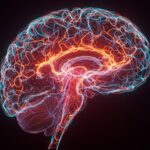Young adults who struggle with attention difficulties may be more prone to becoming addicted to social media, and a new study suggests a possible reason why. In a study recently published in Acta Psychologica, researchers found that the tendency to blame others for negative situations might explain some of the connection between attention deficit symptoms and social media addiction. This suggests that how people manage their emotions could play a role in the development of addictive social media habits in those with attention challenges.
Social media has become an integral part of modern life, offering connection, entertainment, and information. However, for some individuals, social media use can become excessive and problematic, developing into what is known as social media addiction.
Researchers are working to understand why some people are more susceptible to this addiction than others. One area of interest is the relationship between social media addiction and attention-deficit/hyperactivity disorder, commonly known as ADHD, a condition characterized by difficulties with attention, hyperactivity, and impulsivity.
Previous studies have indicated a link between ADHD symptoms and increased social media use, but the reasons behind this connection have remained unclear. To gain a better understanding, a team of researchers decided to investigate whether emotional regulation strategies might bridge the gap between ADHD symptoms and social media addiction.
“Social media use is highly popular nowadays, and problematic social media use has become an important health issue. Additionally, with the growing awareness of ADHD, an increasing number of adults have been identified with corresponding characteristics,” Chung-Ying Lin, a professor at National Cheng Kung University, and Po-Ching Huang, an assistant professor at Hong Kong Metropolitan University.
“Given that problematic social media use may have prolonged detrimental effects, it is important to know how problematic social media could be developed and if there is any mechanism that can explain the relationship between factors (e.g., inattention/hyperactivity symptoms in our study) and problematic social media use.”
To explore this, the researchers recruited 96 young adults from university campuses. The participants were divided into two groups: one group of 35 individuals who showed probable symptoms of ADHD, and another group of 61 individuals who did not. The researchers identified the probable ADHD group using a self-report questionnaire designed to screen for ADHD symptoms in adults. This questionnaire, called the Adult ADHD Self-Report Scale, asks about common ADHD symptoms such as difficulty focusing, being easily distracted, feeling restless, and acting impulsively. This scale breaks down ADHD symptoms into two categories: attention deficit symptoms (like difficulty organizing tasks) and hyperactivity/impulsivity symptoms (like feeling fidgety).
All participants, regardless of group, completed two additional questionnaires. First, they completed the Bergen Social Media Addiction Scale, which is a six-item tool used to assess social media addiction. This scale asks about behaviors like feeling preoccupied with social media, using it to escape problems, and feeling anxious when unable to use it. Participants rated how often they experienced these issues.
Finally, participants completed a portion of the Cognitive Emotion Regulation Questionnaire. This questionnaire assesses different strategies people use to manage their emotions when faced with difficult situations. For this study, the researchers focused on two specific emotional regulation strategies: self-blame and blaming others. The self-blame section asked about tendencies to blame oneself for negative events, while the blaming others section asked about tendencies to blame other people.
In addition to these questionnaires, the researchers also collected basic demographic information from the participants, such as their age, gender, and how much time they spent on social media on weekdays and weekends.
The researchers found that the probable ADHD group had a higher proportion of males, reported using self-blame as an emotional regulation strategy more often, and scored higher on the social media addiction scale. There was no significant difference between the groups in age, time spent on social media, or the use of blaming others as an emotional regulation strategy.
Next, the researchers looked at the relationships between the different measures across all participants. They found that both attention deficit symptoms and hyperactivity/impulsivity symptoms were significantly linked to social media addiction. This means that individuals who reported more symptoms of either attention deficit or hyperactivity/impulsivity also tended to score higher on the social media addiction scale.
Similarly, both types of ADHD symptoms were also associated with both emotional regulation strategies, self-blame and blaming others. However, the link between hyperactivity/impulsivity symptoms and self-blame was not statistically strong.
Interestingly, while self-blame was linked to both attention deficit and blaming others, it was not directly linked to social media addiction in this study. Blaming others, on the other hand, was linked to both ADHD symptoms and social media addiction.
To understand the relationships more deeply, the researchers used a statistical method called mediation analysis. This technique helps to determine if one variable explains the relationship between two other variables. In this case, they wanted to see if self-blame and blaming others acted as mediators in the relationship between ADHD symptoms and social media addiction. The analysis confirmed that blaming others was a significant mediator in the relationship between attention deficit symptoms and social media addiction.
This suggests that part of the reason why individuals with attention deficit symptoms might be more prone to social media addiction is because they tend to blame others when things go wrong, and this external blaming behavior might contribute to their addictive social media use. However, blaming others did not mediate the relationship between hyperactivity/impulsivity symptoms and social media addiction.
“Hyperactivity and inattention symptoms may contribute to the development of problematic social media use,” Huang and Lin told PsyPost. “Moreover, people with inattention problems may increase their use of social media via emotional regulation strategy of blaming others, which is a commonly observed externalizing behavior in individuals with ADHD. That is, they may want to use more social media to blame others online, and this may further exacerbate their problematic social media use.”
“Focusing on ADHD symptoms rather than the diagnosis itself means that the findings apply not only to individuals with ADHD but also to those who exhibit these symptoms without an official diagnosis. Therefore, based on these findings, young adults with hyperactivity and inattention symptoms should pay closer attentions to their emotional regulation strategies and monitor their social media use to prevent the development of problematic behaviors.”
This study has some limitations that should be considered when interpreting the findings. For instance, the study was conducted at a single point in time, meaning researchers cannot determine cause and effect. It is possible that attention deficit symptoms lead to blaming others and then to social media addiction, but it is also possible that social media addiction could worsen attention symptoms or influence emotional regulation strategies, or that other factors are at play. Future studies that follow participants over time would be needed to understand the direction of these relationships.
Despite this limitations, the study provides valuable insights into the potential link between ADHD symptoms, emotional regulation, and social media addiction. Future research could explore these relationships further, perhaps examining different types of emotional regulation strategies, investigating the role of cultural background, and developing interventions to help individuals with ADHD symptoms manage their emotional regulation and social media use in healthier ways
“We continue to study the development of various forms of problematic digital use, such as problematic gaming or YouTube use,” Huang and Lin said. “Meanwhile, we are committed to explore the potential health-related consequences of problematic digital use and focus on diverse populations (e.g., individuals with mental health issues). Currently, most of the studies in this field are cross-sectional designed, and we are conducting longitudinal studies to provide stronger evidence in explaining the causality relationships between key variables.”
“With its multiple functions, digital technology has become highly prevalent across all age groups. However, its problematic use has been associated with various health-related consequences. As research continues to explore the underlying mechanisms, these findings should be integrated into routine health education to raise public awareness and help individuals recognize potential health hazards.”
The study, “The associations between levels of inattention/hyperactivity and social media addiction among young adults: The mediating role of emotional regulation strategies in self-blame and blaming others,” was authored by Tzu-Yu Liu, Wei-Ting Ko, Mark D. Griffiths, Amir H. Pakpour, Servet Üztemur, Daniel Kwasi Ahorsu, Po-Ching Huang, and Chung-Ying Lin.




